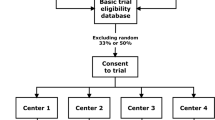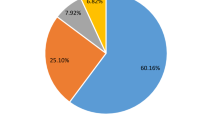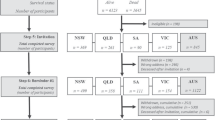Abstract
Study design:
Literature review/semi-structured interviews.
Objective:
To develop a spinal cord injury (SCI) research strategy for Australia and New Zealand.
Setting:
Australia.
Methods:
The National Trauma Research Institute Forum approach of structured evidence review and stakeholder consultation was employed. This involved gathering from published literature and stakeholder consultation the information necessary to properly consider the challenge, and synthesising this into a briefing document.
Results:
A research strategy ‘roadmap’ was developed to define the major steps and key planning questions to consider; next, evidence from published SCI research strategy initiatives was synthesised with information from four one-on-one semi-structured interviews with key SCI research stakeholders to create a research strategy framework, articulating six key themes and associated activities for consideration. These resources, combined with a review of SCI prioritisation literature, were used to generate a list of draft principles for discussion in a structured stakeholder dialogue meeting.
Conclusion:
The research strategy roadmap and framework informed discussion at a structured stakeholder dialogue meeting of 23 participants representing key SCI research constituencies, results of which are published in a companion paper. These resources could also be of value in other research strategy or planning exercises.
Sponsorship:
This project was funded by the Victorian Transport Accident Commission and the Australian and New Zealand Spinal Cord Injury Network.
Similar content being viewed by others
Log in or create a free account to read this content
Gain free access to this article, as well as selected content from this journal and more on nature.com
or
References
Noonan VK, Soril L, Atkins D, Lewis R, Santos A, Fehlings MG et al. The application of operations research methodologies to the delivery of care model for traumatic spinal cord injury: the access to care and timing project. J Neurotrauma 2012; 29: 2272–2282.
Craven C, Balioussis C, Verrier MC, Hsieh JT, Cherban E, Rasheed A et al. Using scoping review methods to describe current capacity and prescribe change in Canadian SCI rehabilitation service delivery. J Spinal Cord Med 2012; 35: 392–399.
Guihan M, Bosshart HT, Nelson A . Lessons learned in implementing SCI clinical practice guidelines. SCI Nurs 2004; 21: 136–142.
The Spinal Cord Injury Network, 2011http://www.spinalnetwork.org.au/ (accessed 9 April 2013).
Christopher and Dana Reeve Foundation. North American Clinical Trials Network, 2014 http://www.christopherreeve.org/site/c.ddJFKRNoFiG/b.8720879/k.B691/NACTN.htm (accessed 26 August 2014).
Guest J, Harrop JS, Aarabi B, Grossman RG, Fawcett JW, Fehlings MG et al. Optimization of the decision-making process for the selection of therapeutics to undergo clinical testing for spinal cord injury in the North American Clinical Trials Network. J Neurosurg Spine 2012; 17 (Suppl 1): 94–101.
Christopher and Dana Reeve Foundation. NeuroRecovery Network, 2012 http://www.christopherreeve.org/site/c.ddJFKRNoFiG/b.5399929/k.6F37/NeuroRecovery_Network.htm (accessed 18 February 2013).
European Multicentre Study about Spinal Cord Injury, 2013http://www.emsci.org/ (accessed 25 August 2014).
Kwon BK, Okon EB, Tsai E, Beattie MS, Bresnahan JC, Magnuson DK et al. A grading system to evaluate objectively the strength of pre-clinical data of acute neuroprotective therapies for clinical translation in spinal cord injury. J Neurotrauma 2011; 28: 1525–1543.
Kwon BK, Soril LJ, Bacon M, Beattie MS, Blesch A, Bresnahan JC et al. Demonstrating efficacy in preclinical studies of cellular therapies for spinal cord injury—how much is enough? Exp Neurol 2013; 248: 30–44 Erratum in: Exp Neurol. 2013; 248: 299–300.
Fawcett JW, Curt A, Steeves JD, Coleman WP, Tuszynski MH, Lammertse D et al. Guidelines for the conduct of clinical trials for spinal cord injury as developed by the ICCP panel: spontaneous recovery after spinal cord injury and statistical power needed for therapeutic clinical trials. Spinal Cord 2007; 45: 190–205.
Tuszynski MH, Steeves JD, Fawcett JW, Lammertse D, Kalichman M, Rask C et al. Guidelines for the conduct of clinical trials for spinal cord injury as developed by the ICCP Panel: clinical trial inclusion/exclusion criteria and ethics. Spinal Cord 2007; 45: 222–231.
Steeves JD, Lammertse D, Curt A, Fawcett JW, Tuszynski MH, Ditunno JF et al. Guidelines for the conduct of clinical trials for spinal cord injury (SCI) as developed by the ICCP panel: clinical trial outcome measures. Spinal Cord 2007; 45: 206–221.
Lammertse D, Tuszynski MH, Steeves JD, Curt A, Fawcett JW, Rask C et al. Guidelines for the conduct of clinical trials for spinal cord injury as developed by the ICCP panel: clinical trial design. Spinal Cord 2007; 45: 232–242.
Landis SC, Amara SG, Asadullah K, Austin CP, Blumenstein R, Bradley EW et al. A call for transparent reporting to optimize the predictive value of preclinical research. Nature 2012; 490: 187–191.
Lemmon VP, Ferguson AR, Popovich PG, Xu XM, Snow DM, Igarashi M et al. Minimum information about a spinal cord injury experiment: a proposed reporting standard for spinal cord injury experiments. J Neurotrauma 2014; 31: 1354–1361.
Biering-Sorensen F, Charlifue S, Devivo MJ, Grinnon ST, Kleitman N, Lu Y et al. Using the spinal cord injury common data elements. Top Spinal Cord Inj Rehabil 2012; 18: 23–27.
DeVivo MJ, Biering-Sorensen F, New P, Chen Y . Standardization of data analysis and reporting of results from the International Spinal Cord Injury Core Data Set. Spinal cord 2011; 49: 596–599.
Norton L Spinal Cord Injury, Australia 2007–08. Injury Research and Statistics Series no. 52. Australian Institute of Health and Welfare: Canberra, Australia, 2010.
Noonan VK, Kwon BK, Soril L, Fehlings MG, Hurlbert RJ, Townson A et al. The Rick Hansen Spinal Cord Injury Registry (RHSCIR): a national patient-registry. Spinal Cord 2012; 50: 22–27.
NTRI Forum—Improving Care of the Injured, 2014http://www.ntriforum.org.au/ (accessed 31 July 2014).
Lavis JN, Posada FB, Haines A, Osei E . Use of research to inform public policymaking. Lancet 2004; 364: 1615–1621.
Lavis JN . How can we support the use of systematic reviews in policymaking? PLoS Med 2009; 6: e1000141.
Moat KA, Lavis JN, Clancy SJ, El-Jardali F, Pantoja T,, Knowledge Translation Platform Evaluation study team. Evidence briefs and deliberative dialogues: perceptions and intentions to act on what was learnt. Bull World Health Organ 2014; 92: 20–28.
Bragge P, Piccenna L, Middleton JW, Williams S, Creasey G, Dunlop S et al. Developing a spinal cord injury research strategy using a structured process of evidence review and stakeholder dialogue. Part I: Rapid review of SCI prioritisation literature. Spinal Cord, (doi:10.1038/sc.2015.85).
Middleton JW, Piccenna L, Gruen RL, Williams S, Creasey G, Dunlop S et al. Developing a spinal cord injury research strategy using a structured process of evidence review and stakeholder dialogue. Part III: Outcomes. Spinal Cord, (doi:10.1038/sc.2015.87).
Anderson KD . Targeting recovery: priorities of the spinal cord-injured population. J Neurotrauma 2004; 21: 1371–1383.
Viergever RF, Olifson S, Ghaffar A, Terry RF . A checklist for health research priority setting: nine common themes of good practice. Health Res Policy Syst 2010; 8: 36.
Sibbald SL, Singer PA, Upshur R, Martin DK . Priority setting: what constitutes success? A conceptual framework for successful priority setting. BMC Health Services Res 2009; 9: 43.
Coyne IT . Sampling in qualitative research. Purposeful and theoretical sampling; merging or clear boundaries? J Adv Nurs 1997; 26: 623–630.
Crabtree B, Miller WL . Doing Qualitative Research, 2nd edN. Sage Publications: Thousand Oaks, CA, USA, 1999.
Denzin N, Lincoln Y . Handbook of Qualitative Research, 2nd edN. Sage Publications: Thousand Oaks, CA, USA,. 2000.
Sandelowski M . The problem of rigor in qualitative research. ANS Adv Nurs Sci 1986; 8: 27–37.
Anderson KD, Friden J, Lieber RL . Acceptable benefits and risks associated with surgically improving arm function in individuals living with cervical spinal cord injury. Spinal Cord 2009; 47: 334–338.
Gruen RL, Bragge P, Sedgman C, Pitt V, Chau M . An Environmental Scan of Traumatic Brain Injury and Spinal Cord Injury Research for the Victorian Transport Accident Commission (TAC): Summary of Findings. National Trauma Research Institute: Melbourne, Australia, 2011.
Liverman C, Altevogt B, Joy J, Johnson R,, Committee on Spinal Cord Injury Institute of Medicine Spinal Cord Injury: Progress, Promise and Priorities. Washington DC, USA, 2005.
Creasey G, McKenna S, Soril L, Samos C, Beekhuis G. . A Roadmap for Spinal Cord Injury: The Stanford Symposium on Regeneration, Repair and Restoration of Function After Spinal Cord Injury, 2012.
Weaver FM . Spinal Cord Injury QUERI Center 2012 Strategic Plan. Department of Veterans Affairs (DOVA): Illinois, USA. 2012.
Institute for Safety Compensation and Recovery Research Neurotrauma Research Strategy 2011—2015. Institute for Safety, Compensation and Recovery Research: Melbourne, Australia, 2012.
Boninger ML, Brienza D, Charlifue S, Chen YY, Curley KC, Graves DE et al. State of the Science Conference in Spinal Cord Injury Rehabilitation 2011: introduction. Spinal Cord 2012; 50: 342–343.
Heinemann AW, Steeves JD, Boninger M, Groah S, Sherwood AM . State of the Science in Spinal Cord Injury Rehabilitation 2011: informing a new research agenda. Spinal Cord 2012; 50: 390–397.
Adams M, Carlstedt T, Cavanagh J, Lemon RN, McKernan R, Priestley JV et al. International spinal research trust research strategy. III: A discussion document. Spinal Cord 2007; 45: 2–14.
Ramer MS, Harper GP, Bradbury EJ . Progress in spinal cord research—a refined strategy for the International Spinal Research Trust. Spinal Cord 2000; 38: 449–472.
Harper GP, Banyard PJ, Sharpe PC . The International Spinal Research Trust's strategic approach to the development of treatments for the repair of spinal cord injury. Spinal Cord 1996; 34: 449–459.
Acknowledgements
We gratefully acknowledge the following people for their generous contribution to this project: Dr Naomi Kleitman, Craig H Neilson Foundation, California, USA; John Walsh AM, Magoo Actuarial Consulting, NSW, Australia; Pam Draganovic, La Trobe University, Victoria, Australia; Emma Donoghue, Melbourne, Victoria, Australia. This project was funded by the Victorian Transport Accident Commission and the Australian and New Zealand Spinal Cord Injury Network.
Author information
Authors and Affiliations
Corresponding author
Ethics declarations
Competing interests
The authors declare no conflict of interest.
Rights and permissions
About this article
Cite this article
Bragge, P., Piccenna, L., Middleton, J. et al. Developing a spinal cord injury research strategy using a structured process of evidence review and stakeholder dialogue. Part II: Background to a research strategy. Spinal Cord 53, 721–728 (2015). https://doi.org/10.1038/sc.2015.86
Received:
Revised:
Accepted:
Published:
Issue date:
DOI: https://doi.org/10.1038/sc.2015.86
This article is cited by
-
Research priorities to enhance life for people with spinal cord injury: a Swedish priority setting partnership
Spinal Cord (2023)
-
What do we know about evidence-informed priority setting processes to set population-level health-research agendas: an overview of reviews
Bulletin of the National Research Centre (2022)
-
Ambulances are for emergencies: shifting attitudes through a research-informed behaviour change campaign
Health Research Policy and Systems (2019)
-
Work and SCI: a pilot randomized controlled study of an online resource for job-seekers with spinal cord dysfunction
Spinal Cord (2019)
-
It is a marathon rather than a sprint: an initial exploration of unmet needs and support preferences of caregivers of children with SCI
Spinal Cord (2018)



